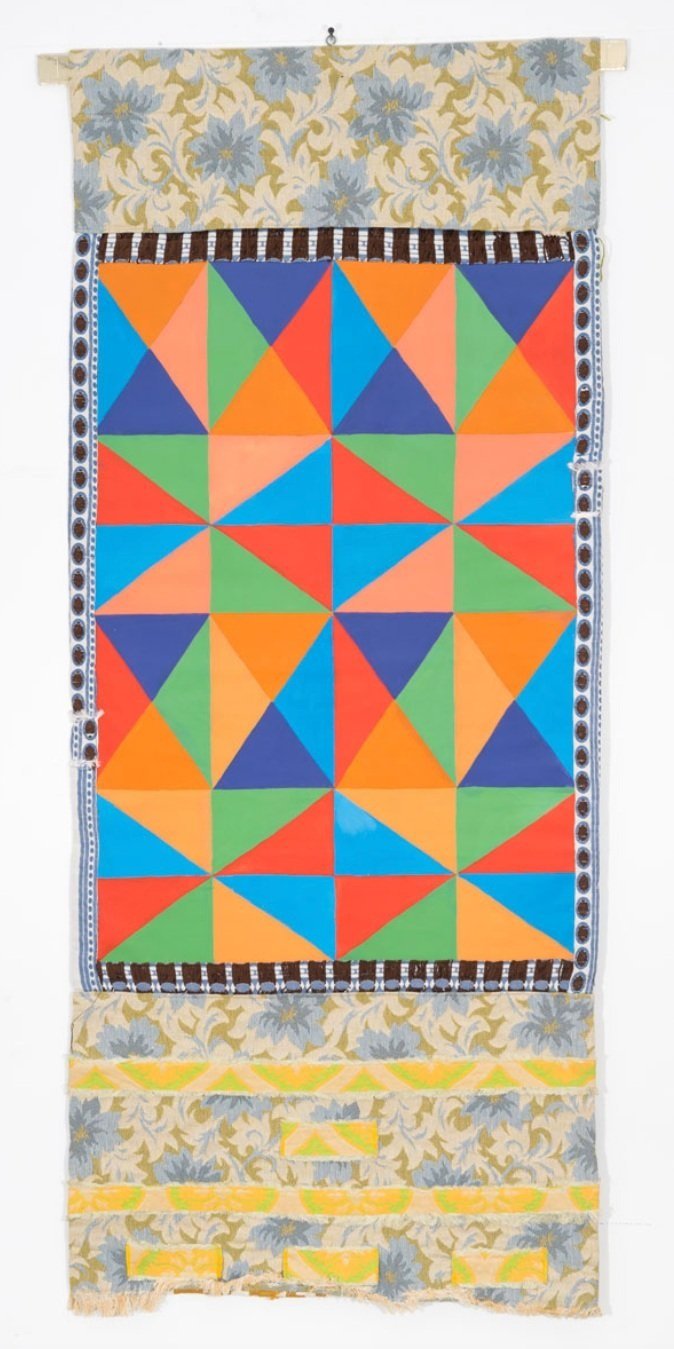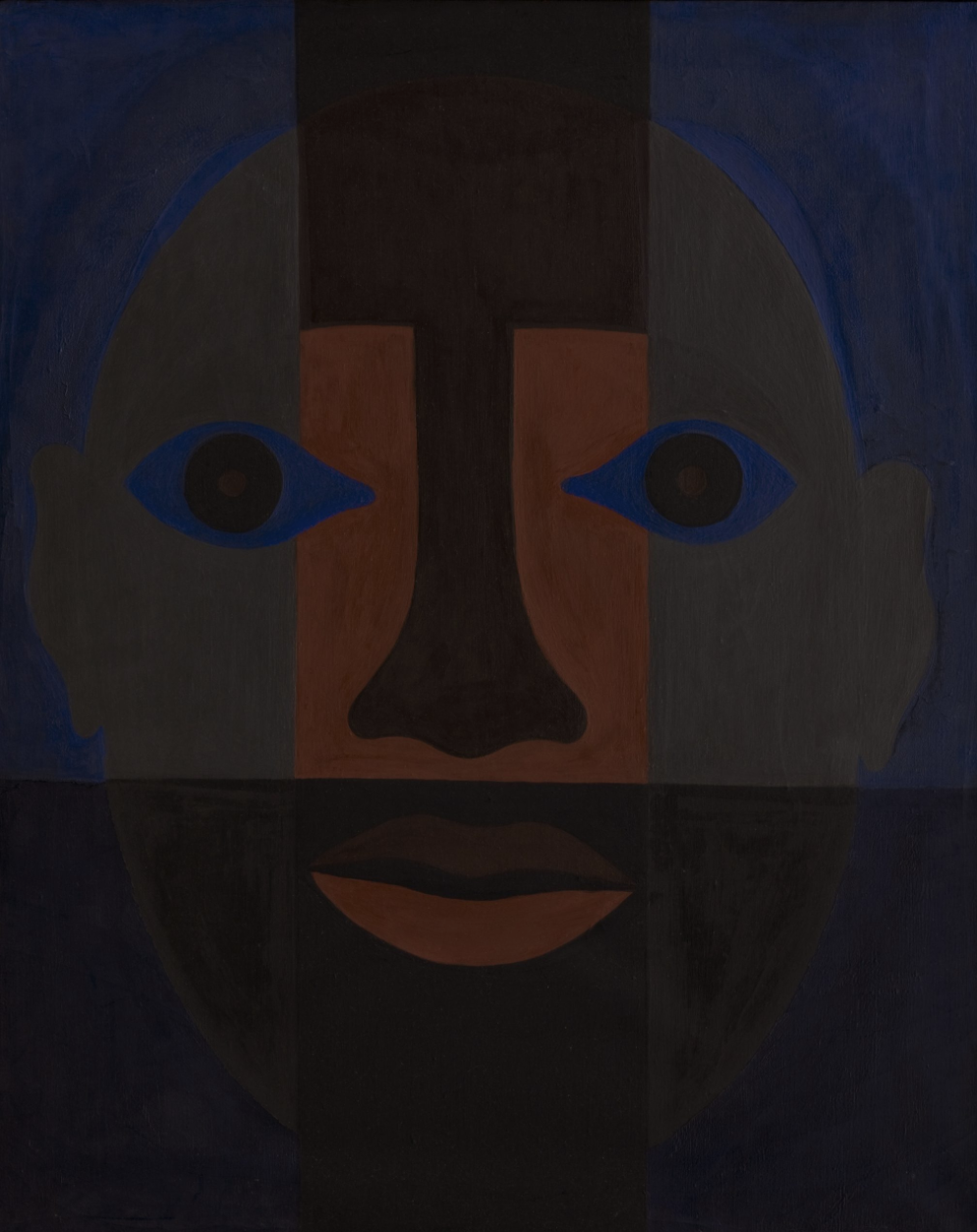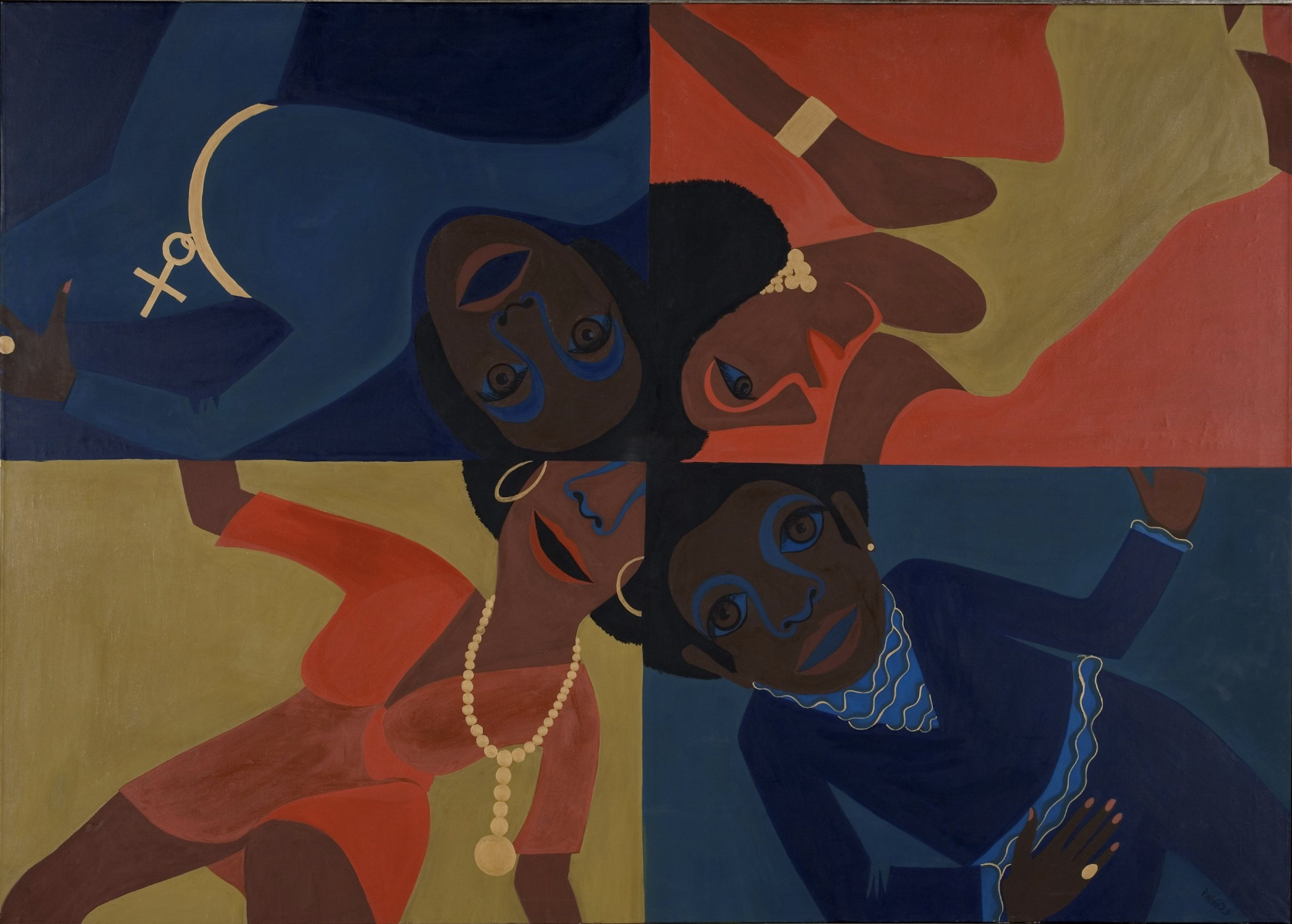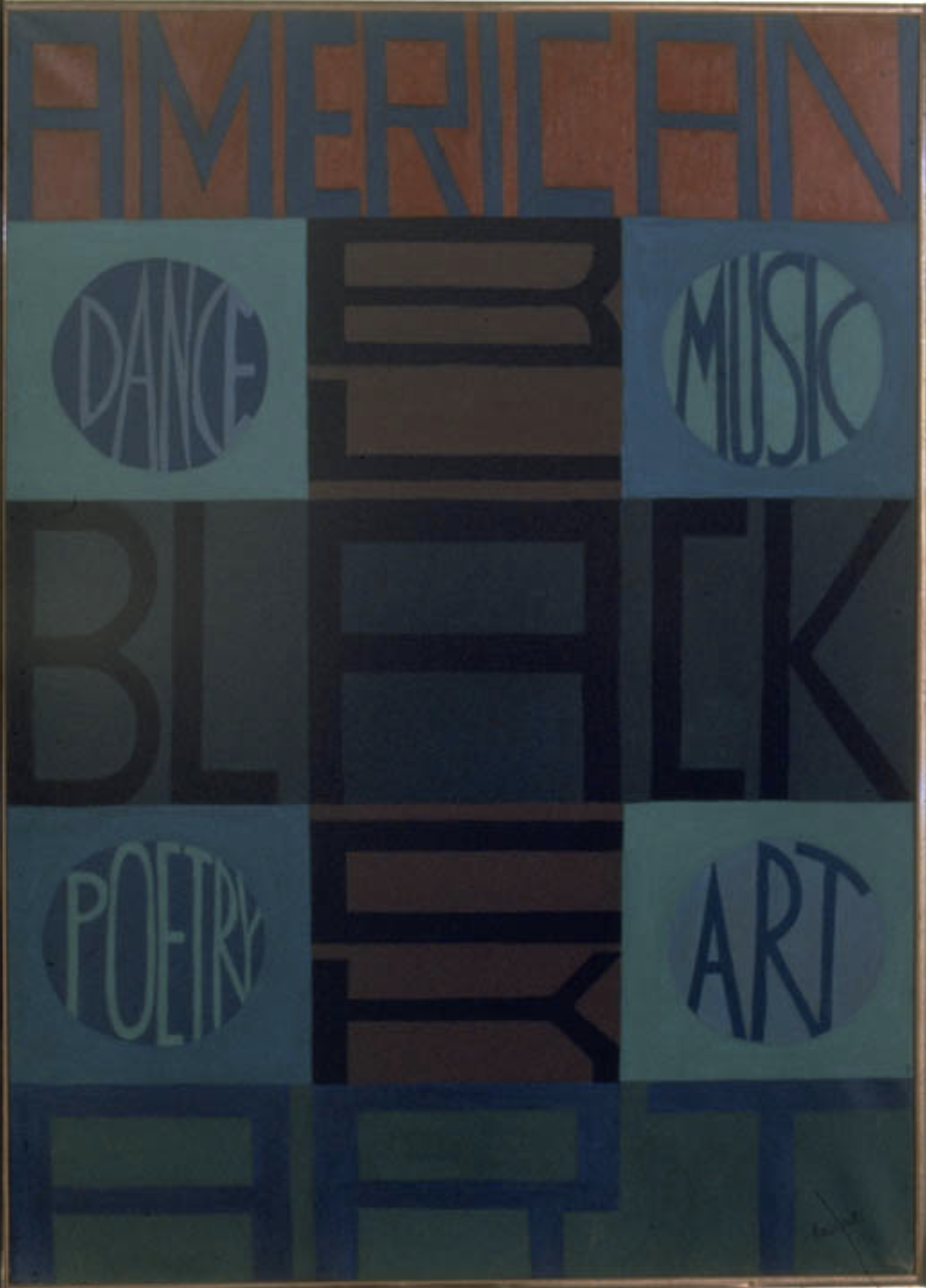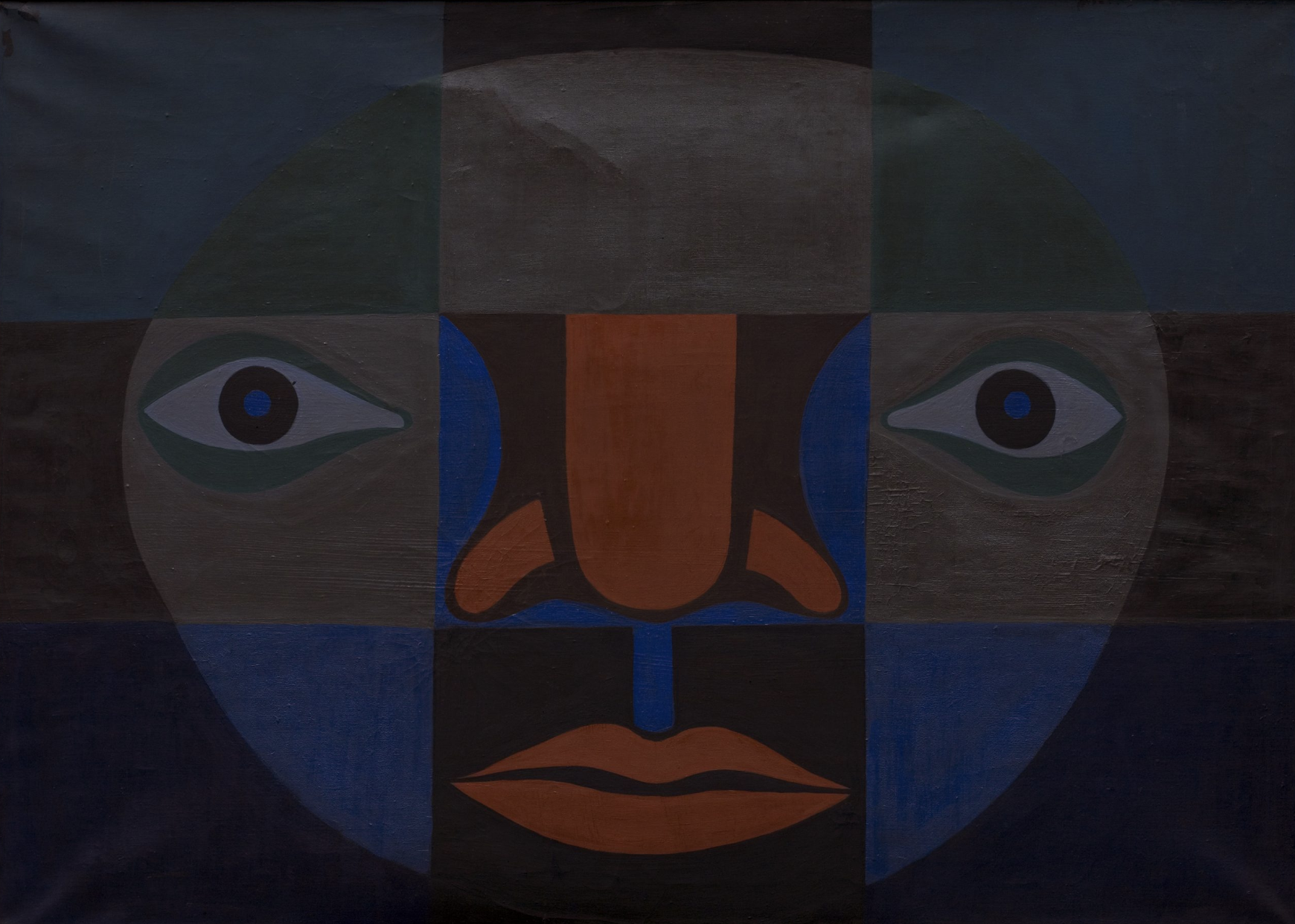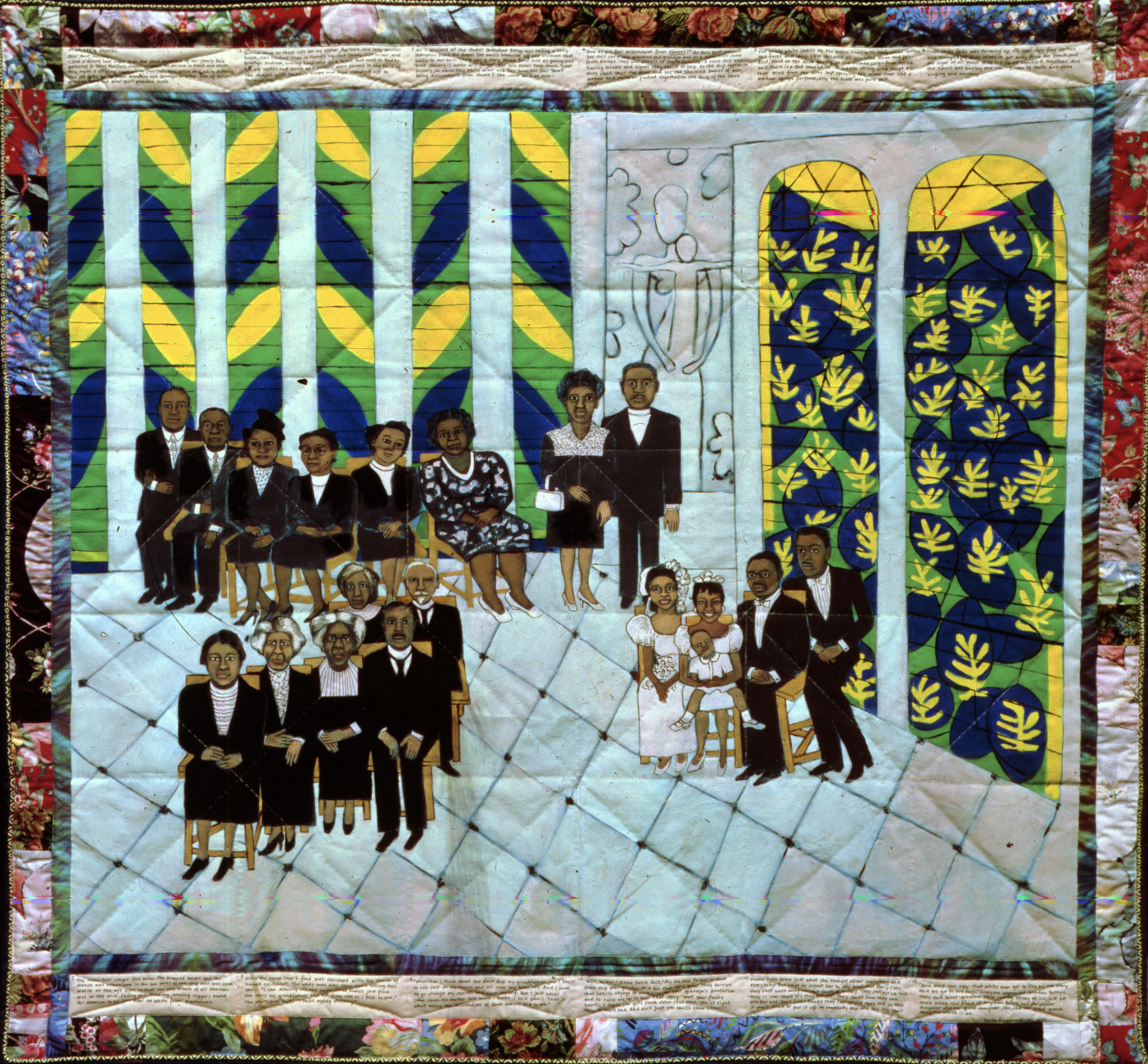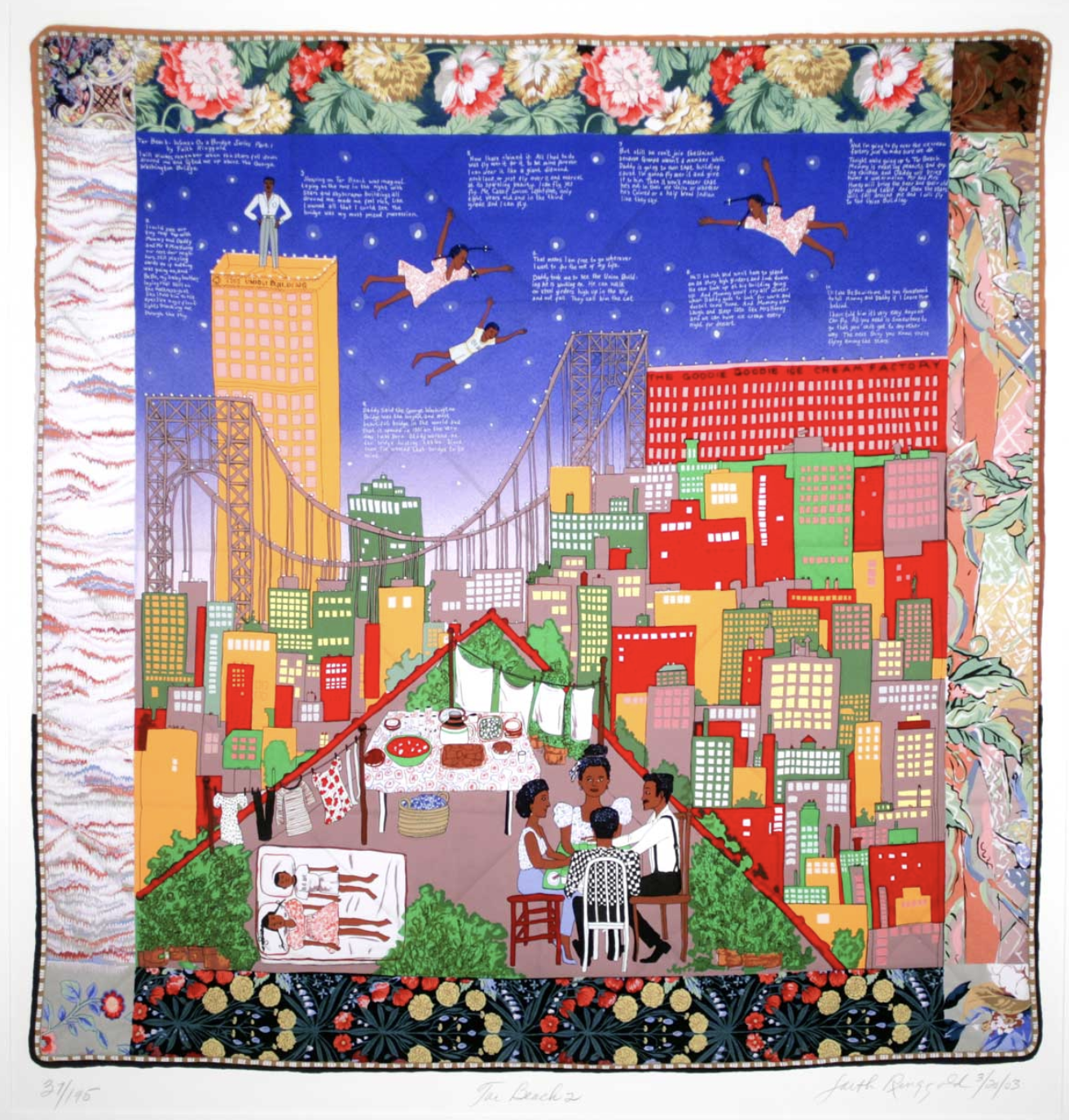Faith Ringgold
Groovin High, 1986, Acrylic on canvas, tie-dyed, pieced fabric border, 56 x 92 in.
Faith Ringgold (she/her) was born in 1930 in Harlem, New York. She grew up during the end of the Harlem Renaissance, surrounded by a community of artists and nurtured by her parents, her creativity flourished from an early age. Her mother, a fashion designer and seamstress, taught Faith how to sew when she was young and encouraged her to draw as much as possible.
The Trio, 1964, Oil on paperboard, 24 x 19 1/8 in.
Self-Portrait, 1965, Oil on canvas, 50 x 40 in.
In 1948, Ringgold enrolled in the City College of New York to study art. However, she was forced to switch to education with a focus on art due to the limited majors available to women at the time. She earned her bachelor's degree in 1955 and her master's in 1959 from the same university.
Hide Little Children, 1966, Oil on canvas, 26 x 48 in.
After attaining her master's degree, she traveled to Europe with her mother and two daughters, visiting places like Rome, Florence, and Paris. Faith was captivated by the art she experienced in different museums during this trip. Her visit to the Louvre would later influence her body of work, “The French Collection” (1991-1997), a series of painted quilts.
Fathers, 1974, Acrylic on canvas, 83 1/2 x 36 1/4 in.
Breakfast in Bed, 1974, Acrylic on canvas, 65 1/2 x 27 in.
Upon her return to the United States, Ringgold encountered difficulties in getting her landscape paintings into galleries. This was during the early sixties, a period dominated by the Civil Rights Movement. Her work shifted, drawing inspiration from the writings of James Baldwin, Amiri Baraka, as well as, African Art, Impressionism, and Cubism.
In 1963, Ringgold began her series, “The American People”, a collection of haunting depictions reflecting the truths unfolding in America. The series comprises around 20 portraits representing people of all ages, races, classes, and genders, often incorporating the American flag as a symbol of interracial tensions and power dynamics. In December of 1967, Robert Newman of Spectrum Gallery in New York facilitated a solo exhibition of this work.
US Postage Commemorating the Advent of Black Power, 1967, Oil on canvas, 72 x 96 in.
The Flag is Bleeding, 1967, Oil on canvas, 72 x 96 in.
Following this opportunity, Ringgold experimented with her subject matter and use of color, creating her “Black Light Series” (1967-1970), characterized by canvases of masked faces referencing African art and design, often utilizing strong shades of black and deep muted colors. Concurrently, she actively participated in protests against the gross exclusion of women and people of color in New York City's art world exhibitions and collections.
Black Light Series (from left to right) Man, 1967, Oil on canvas, 30 1/16 x 24 1/8 in. Party Time, 1969, Oil on canvas, 59 3/4 x 84 in. Black Art Poster, 1969, Oil on canvas, 50 x 36 in. Big Black, 1967, Oil on canvas, 30 1/4 x 42 1/4 in.
In the early seventies, Faith self-identified as a feminist and joined fellow artists in advocating for increased representation of women through protests and political activism. In 1971, she was commissioned by the Creative Artists Public Service Program to install a piece in the Women’s Facility on Rikers Island. "For the Women’s House" (1971) is a large-scale mural depicting women in various professions and societal roles; it is regarded as her first feminist piece.
For The Women’s House, 1971, Oil on Canvas, 96 x 96 in.
Throughout her career, Faith confronted the harsh realities of racism, sexism, segregation, and discrimination, creating artwork that serves as a powerful reflection of these struggles intertwined with celebrations of Black American culture. One of her most renowned quilts, "Who’s Afraid of Aunt Jemima?" (1983), confronts cultural stereotypes within harmful depictions of Black people in America.
Who’s Afraid of Aunt Jemima?, 1983, Acrylic on canvas, dyed, painted and pieced fabric, 90 x 80 in.
In 1991, Ringgold began her series, “The French Collection”, influenced by her early European travels. The series comprises 12 story quilts telling a fictional story about a woman named Willia Marie Simone, who travels from Harlem to Paris to pursue artistry and modeling, grappling with issues of race, feminism, and identity.
(Left) Maya’s Quilt of Life, 1989, Acrylic on canvas and printed, dyed and pieced fabric, 73 x 73 in. (Right) Matisse’s Chapel, 1991, Acrylic on canvas with pieced fabric border, 74 x 79 1/2 in.
Faith Ringgold passed away on April 13, 2024, at the age of 93 in her home. Ringgold’s dedication to the arts paved the way for younger Black artists to pursue storytelling through alternative visual modes. Her legacy lives on through multiple upcoming shows and exhibitions, continuing to inspire generations to come.
Tar Beach #2, 1990, Silkscreen on silk, 66 x 66 in.
Bibliography:
"Trailblazing Artist and Activist Faith Ringgold Has Died at 93." Artnet News. April 14, 2024. https://news.artnet.com/art-world/faith-ringgold-death-2469431.
Wikipedia. 2024. "The French Collection." Wikimedia Foundation. Last modified April 14, 2024. https://en.wikipedia.org/wiki/The_French_Collection.
Limbong, Andrew. "Faith Ringgold, Quilt and Visual Artist, Dies at 93." NPR. April 13, 2024. https://www.npr.org/2024/04/13/685930840/faith-ringgold-quilt-and-visual-artist-dies-at-93 .
“Faith Ringgold.” Guggenheim. https://www.guggenheim.org/artwork/artist/faith-ringgold .
“Faith Ringgold.” ACA Galleries. https://acagalleries.com/artists/faith-ringgold/ .
Wikipedia. 2024. "Faith Ringgold." Wikimedia Foundation. Last modified April 29, 2024. https://en.wikipedia.org/wiki/Faith_Ringgold.






